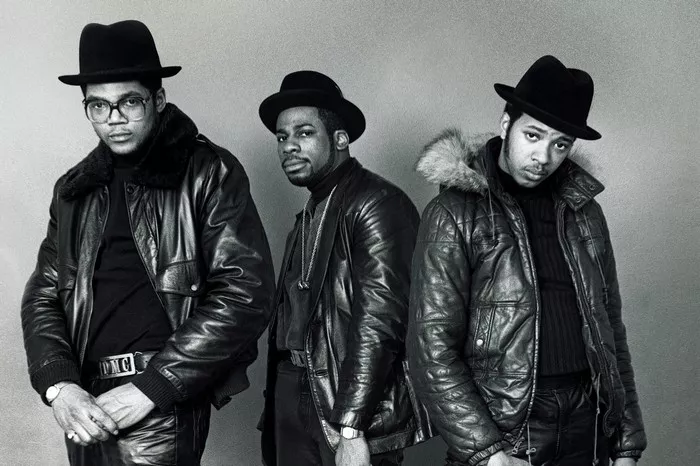Hip pop music has undeniably become a global phenomenon that has captivated audiences across generations. This unique genre, which seamlessly blends rhythmic beats with poetic lyrics, has a rich history that dates back several decades. One question that has intrigued music enthusiasts for years is, “Who is the father of hip hop?” In this comprehensive exploration, we will dive deep into the annals of hip pop music history, examining the pioneers, innovators, and the true architect of this influential genre.
The Birth of a Musical Revolution
Hip pop music emerged from the vibrant cultural landscape of the Bronx, New York City, during the 1970s. It was a time of socio-economic challenges, and marginalized communities sought creative outlets for self-expression. It was in this crucible that the father of hip hop began to shape the genre we know today.
Kool Herc: The Turntable Wizard
The legend of Clive Campbell, better known as DJ Kool Herc, looms large in the history of hip pop music. In the early 1970s, Kool Herc, a Jamaican immigrant, pioneered the art of turntablism. His iconic parties in the Bronx showcased his remarkable ability to manipulate vinyl records, isolating the drum breaks that would eventually become the backbone of hip pop music. Kool Herc’s contributions to the genre cannot be overstated, earning him a well-deserved place in hip hop history.
Grandmaster Flash and the Technological Advancements
The evolution of hip pop music would not have been possible without the technological innovations brought to the forefront by Grandmaster Flash. His mastery of the turntable and his invention of the crossfader allowed for seamless transitions between tracks, setting a new standard for DJs. Grandmaster Flash’s contributions were pivotal in establishing the fundamental techniques that are still integral to hip pop music today.
The Wordsmith: Grandmaster Melle Mel
While DJs like Kool Herc and Grandmaster Flash were shaping the musical landscape, the role of MCs (Master of Ceremonies) was also evolving. Grandmaster Melle Mel, with his thought-provoking and socially conscious lyrics, pushed the boundaries of hip pop music. His iconic track “The Message” addressed issues such as poverty, violence, and urban decay, marking a turning point in the lyrical content of the genre.
The Breakdancing Revolution
In the early 1980s, hip pop music transcended the realm of audio and found expression in the physical art of breakdancing. This dance form, characterized by intricate footwork and acrobatic moves, became an integral part of hip pop culture. Breakdancing crews like Rock Steady Crew and New York City Breakers showcased their talents worldwide, further solidifying hip pop music’s global influence.
The Rise of Rap: Grandmaster Caz and Sugarhill Gang
As hip pop music continued to evolve, rap music began to take center stage. Grandmaster Caz, a prominent figure in the hip hop community, was instrumental in developing rap as an art form. His lyrical prowess and storytelling abilities laid the foundation for future rap artists. In 1979, the Sugarhill Gang’s “Rapper’s Delight” became the first hip hop track to gain widespread recognition, thrusting rap into the mainstream and forever altering the course of hip pop music.
Hip Pop Goes Mainstream: Run-DMC and LL Cool J
The 1980s saw hip pop music making its way into the mainstream, thanks in large part to iconic acts like Run-DMC and LL Cool J. These artists combined the raw energy of hip pop with catchy hooks and accessible lyrics. Run-DMC’s fusion of rock and hip pop in tracks like “Walk This Way” with Aerosmith marked a groundbreaking moment for the genre, paving the way for future collaborations and genre-blurring experiments.
The West Coast Revolution: NWA and Dr. Dre
While hip pop music had its roots in the Bronx, it was not confined to the East Coast. The West Coast brought its unique flavor to the genre, with NWA (Niggaz Wit Attitudes) and Dr. Dre at the forefront. NWA’s unapologetic and provocative lyrics challenged societal norms and gave voice to the struggles of urban youth. Dr. Dre’s production skills revolutionized hip pop music, creating the signature “West Coast G-funk” sound that remains influential to this day.
The Birth of Gangsta Rap: Tupac Shakur and The Notorious B.I.G.
The 1990s witnessed the rise of gangsta rap, a subgenre of hip pop music known for its gritty portrayals of street life. Two iconic figures, Tupac Shakur and The Notorious B.I.G., emerged as prominent voices in this era. Their complex lyricism and deeply personal narratives brought a level of authenticity to hip pop music that resonated with a diverse audience.
The Contemporary Titans: Jay-Z and Eminem
As hip pop music continued to evolve in the 2000s and beyond, artists like Jay-Z and Eminem asserted their dominance in the genre. Jay-Z’s entrepreneurial spirit and lyrical prowess solidified his status as a hip pop mogul, while Eminem’s storytelling and technical skills earned him critical acclaim. Both artists have had a profound impact on the direction of hip pop music in the 21st century.
Conclusion: The Legacy of Hip Pop Music
In the quest to determine the father of hip hop, it becomes clear that this genre is a collective creation, shaped by a multitude of visionaries. While DJ Kool Herc and Grandmaster Flash laid the foundational elements, MCs like Grandmaster Melle Mel, the pioneers of breakdancing, and later rap legends like NWA, Tupac Shakur, and Jay-Z each played pivotal roles in the evolution of hip pop music.
Ultimately, the father of hip hop is not a singular figure but a collective spirit that continues to inspire new generations of artists. Hip pop music’s ability to adapt and innovate while staying true to its roots is a testament to its enduring power and influence in the world of music and culture. As we celebrate its rich history, we can only anticipate the exciting directions in which hip pop music will continue to evolve in the future.

